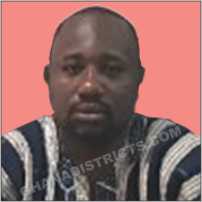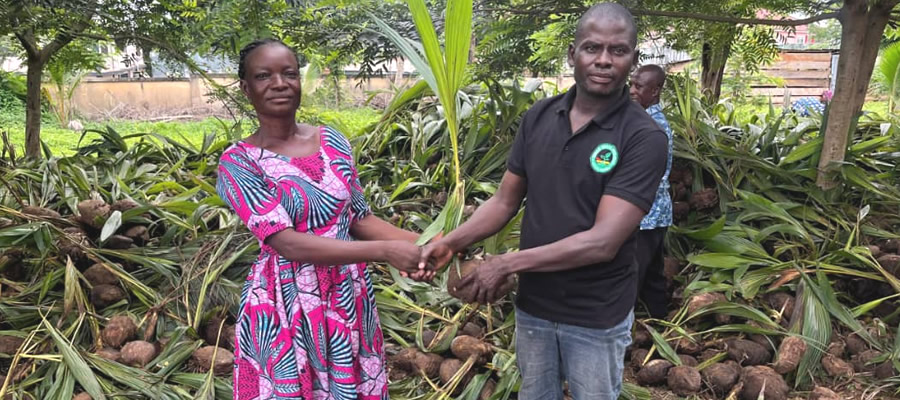

Introduction
Data on household size, composition and structure forms the basis of family relations and social cohesion. The 2010 population and housing census collected data on these social characteristics of the population. This chapter discusses these characteristics which include household size and composition, marital status, nationality, religious affiliation, literacy and education for the Asunafo South District.
Household Size, Composition and Headship
The 2010 PHC defines a household as a person or group of persons who live together in the same house or compound, share the same housekeeping arrangements and are catered for as one unit and in addition look up to one person as the household head who in turn, provides the social and economic needs of the household.
Household Size
The household is the basic unit for demographic and economic analyses. Household size refers to the total number of persons in a household irrespective of age, sex, or relationship status. Table 3.1 presents the household size of the district by locality of residence. There are 20,241 households in the district of which about 28 percent (5,764) reside in urban areas with the rest in rural settlements. The district has an average household size of 4.7 persons with slightly more persons in the rural (4.9) areas than the urban areas.
Household Composition
shows the composition of the household population by and sex. The data show that there are 94,603 households population in the district. Household heads constitute 21.4 percent of the household population. Spouse constitutes 12.1 percent whereas biological children constitute 46.1 percent. Grand children also constitute eight percent of the household members in the district. The data show that male household heads form 31.4 percent of household composition whilst female household heads form only 11 percent. There are more male relatives and non-relatives in the households that female relative or non-relative.
Household Structure
Household structure presented in this section is defined as the classification of persons in the households and the type of relationship among household members who were present on census night. This social classifications determines whether one falls in a nuclear or extended family. Head only households constitute only 3.2 percent of the total number of households in the district.
There are three times more as many male (4.9%) single person “one man” households in the district as female (1.4%) single person households. The data further reveals that more than one-third (35.2%) of the household population live in nuclear families of father, mother and children, whiles about nine percent (8.5%) are in single parent nuclear families (parent and children only). A small proportion of couples live without any children in their household (1.7%) among the nuclear families.
Majority of the extended family households are single parent residing with other relatives (24.9%), with slightly more females (25.1%) in this family structure than males (24.7%). An important revelation from the data is the fact that more than one-fifth (22.1%) of all household members in the district reside in a single parent household, irrespective of whether it is nuclear or extended, with more females (25.3%) than males (19.2%).
Access to Utilities
Access to utilities and Household Facilities
Information on household facilities and access to utilities give clear indication of how accessible certain basic facilities and necessities are to communities in the district.
Main Source of Lighting
Flash or torch light or rechargeable light is the main source of lighting for most households (52.1%). About one-third (32.3%) of the households use electricity, that is, they are connected to the national grid. About one in every seven (14%) households in the district depends on kerosene lamp for lighting. Electricity from the mains is widely used by urban households, while flashlight/torch is predominantly used by rural households. Whiles electricity from the national grid remains an important source of lighting for most (69.5%) urban households, a significant proportion (18.1%) also rely on their flash lights. Conversely, most of the rural households depend on flash light (65.6%) for lighting.
Main source of fuel for cooking
In spite of the promotion of cooking gas, wood and charcoal are the dominant sources of fuel for cooking by households in the district accounting for 92.7 percent of all cooking fuel. Only 2.9 percent of households use gas as their source of fuel for cooking. Households who do not cook constitute 3.5 percent of households in the district. The heavy dependence on wood and charcoal as the main source of cooking fuel has implication on the exploitation of the environment. Serious efforts should be put in place to address this challenge.
Cooking facility
Space for cooking is well provided for households in the district. More than 40 percent (44.5%) of households have access to separate room for exclusive use. One out of seven (16.3%) use separate rooms that are shared with other household(s) whiles 9.9 percent use open spaces in their compound. A small proportion of households (0.3%), however cook in the hall or the bedroom while an additional (2.1%) use an enclosure without a roof for cooking.
Date Created : 11/14/2017 3:45:45 AM











 facebook
facebook
 twitter
twitter
 Youtube
Youtube
 +233 593 831 280
+233 593 831 280 0800 430 430
0800 430 430 GPS: GE-231-4383
GPS: GE-231-4383 info@ghanadistricts.com
info@ghanadistricts.com Box GP1044, Accra, Ghana
Box GP1044, Accra, Ghana